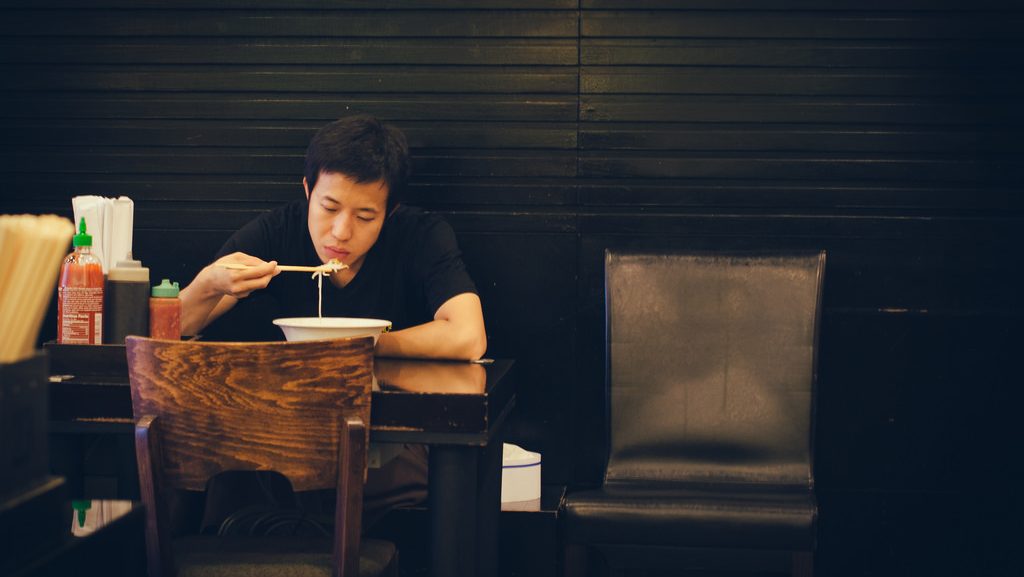My friend studied here as a visiting student for a year. So, naturally, whenever I have questions about Oxford, I turn to her. We’re both Asian American women from the Bay Area who have similar interests and experiences – writing, food, and a shared journalism camp – so I like to think there are ways in which our definitions of home will intersect.
When we met at a journalism camp in San Jose, one of the first things that established our bond was bubble tea, or boba tea. To be fair, it was a lot of me inviting (and then dragging) her along to bubble tea places around the Bay with me. There’s a reason why discourses around Asian identity seem to revolve around boba as a cultural marker and means of connection. It’s a social activity, for one. When I think about home, I think about going out with friends for bubble tea. I think about my beloved ethnic and cultural communities in the greater part of Los Angeles like San Gabriel or Monterey Park, where bubble tea reigns supreme. It then makes me a little sad to think about the comparatively limited bubble tea options here at Oxford, which I’ve almost exhausted at this point.
I do think that to conflate Asian American identity, and Asian diasporic identity in general, with bubble tea, is reductive. Our culture isn’t just bubble tea, and I acknowledge that not every Asian sees the drink as important or enjoyable. Because of that, I’m always a bit frustrated when I see monolithic discussions of identity centred solely around tapioca pearls. That being said, I find it difficult as well to separate my own definition of identity from my reality of home, which was centred around the accessibility of bubble tea.
I grew up in a predominantly Asian community in Silicon Valley, where bubble tea was always a given. In middle school, we had bubble tea social gatherings and club fundraisers. It was our version of Oxford pub culture. Then, in high school my horizons expanded. I met my journalism friend, the former Oxford visiting student, and we connected over exploring Asian restaurants and bubble tea in between interviews and writing articles in the newsroom. She told me that I contributed to her understanding of cultural identity; for me, that experience of connection over food solidified my conception of friendship. Friends who drink bubble tea together stay together.
This conception of friendship would prove to fail. I later realised that bubble tea is merely a mechanism to bring together shared interests. Two incompatible people won’t become compatible just because they drink bubble tea together. But, in the absence of another activity, the simple invitation to get bubble tea can be an opportunity to connect over culture, over identity, and over stories.
I’ve been trying to recruit people to come to Spring Tea on Cowley Road for that purpose. My friend suggested IN CHA, also a favourite of mine. Still, IN CHA is a bit further away from the city centre than Spring Tea is, so I like to use the latter to gauge interest first, in both bubble tea and building a friendship with me, as narcissistic as it might sound.
Spring Tea’s relative closeness makes it less of a commitment for others, and my favourite aspect of it is that its offerings of Chinese tea feel like home to me. I’m slightly bizarre in that, despite waxing poetic about bubble tea, I tend to not order the actual boba that gives it its name. I opt instead for just the milk tea, with one of my favourites being the hibiscus green. It reminds me of my favorite bubble tea places in the Bay Area: never watered down, with a pure, fresh tea taste instead of the excessive sugary-syrup taste that characterises so many bubble tea places.
The process of attempting to build friendships is never an easy one. Sometimes, my invitations to go to Spring Tea together are indirectly dismissed, or I can very clearly see the lack of interest. That’s alright, there are other ways for people to connect. It hurts, of course, but any kind of friendship-related rejection hurts. It just happens to be worse for me as an international student because bubble tea has become a central part of my identity, my definition of home, and my go-to conversation starters.
The rejections make the small victories even more meaningful. Recently, I met a visiting student here at Oxford. I think I talked passionately about Spring Tea for a solid five minutes. Then I stopped because sometimes, getting overly excited about something turns people off. I’ve seen it happen a number of times. I shouldn’t have done that, I thought. My social anxiety started to kick in. Now I’m just a weirdo who’s obsessed with boba tea.
Yet despite my fears, she didn’t dismiss my spiel. Instead, she asked if we could go together. We ended up sitting and talking about our Oxford experiences for three hours: me over my camellia oolong milk tea, and her over her lava taro milk.
That’s what I mean when I say that bubble tea is a mechanism for connection. It truly means so much to me whenever there are people who welcome what others are passionate about, even if it’s something as small as going to a tea place together. At Oxford, I’m starting to view friendships the same way: you start to know if someone could be your friend based on their reactions to the things you’re passionate about. That’s what we call a “vibe check.” And, once the vibe check is passed, that’s community. That’s home.

